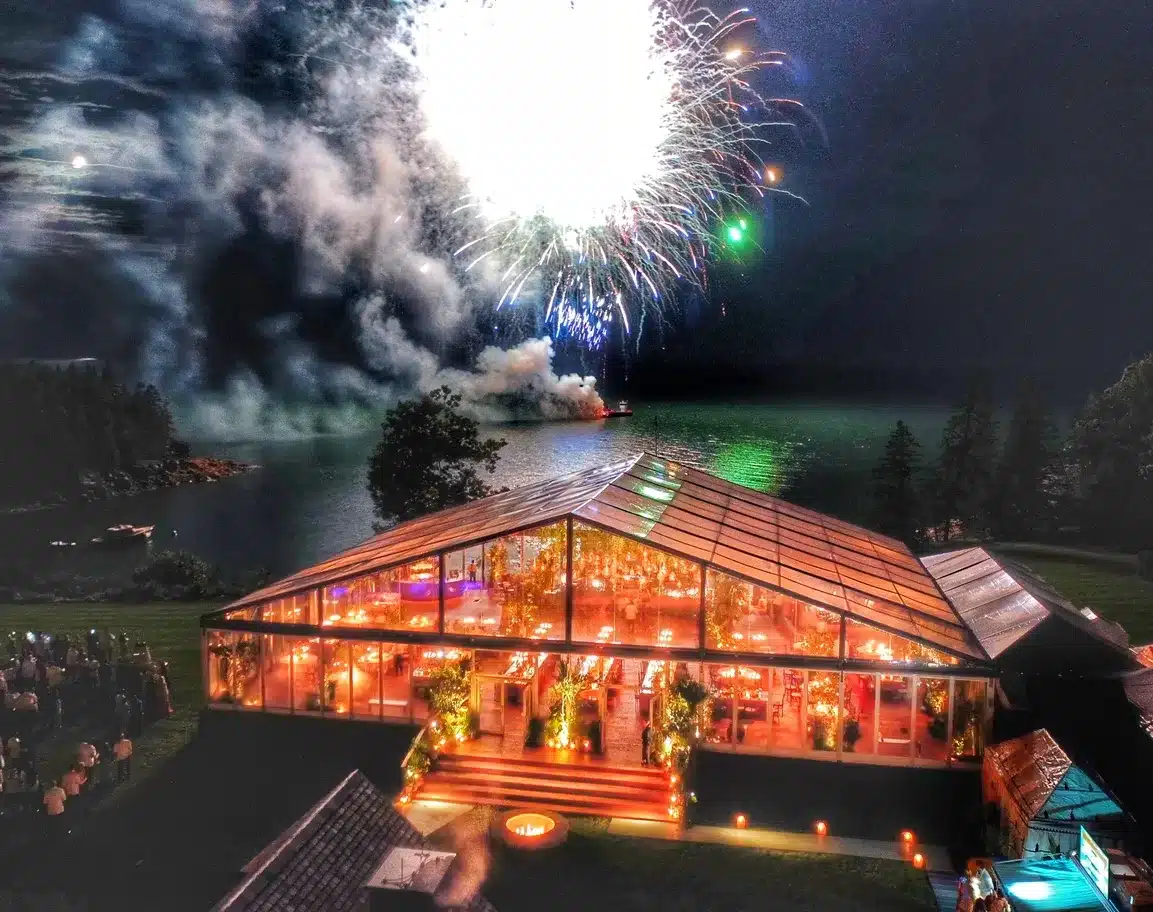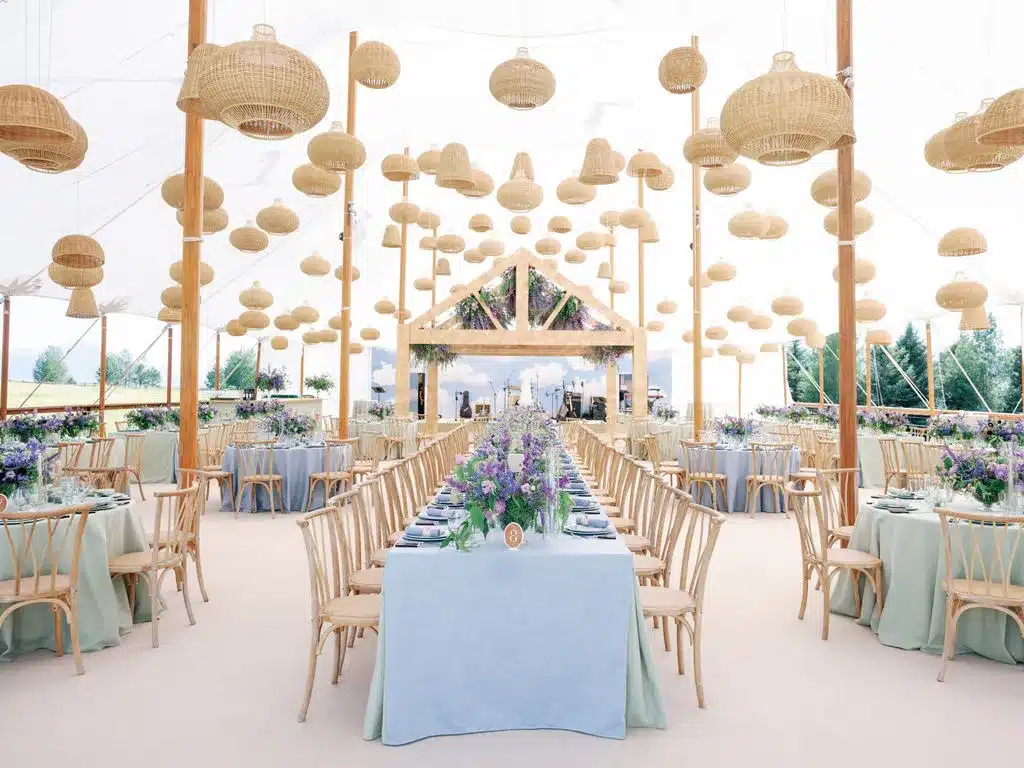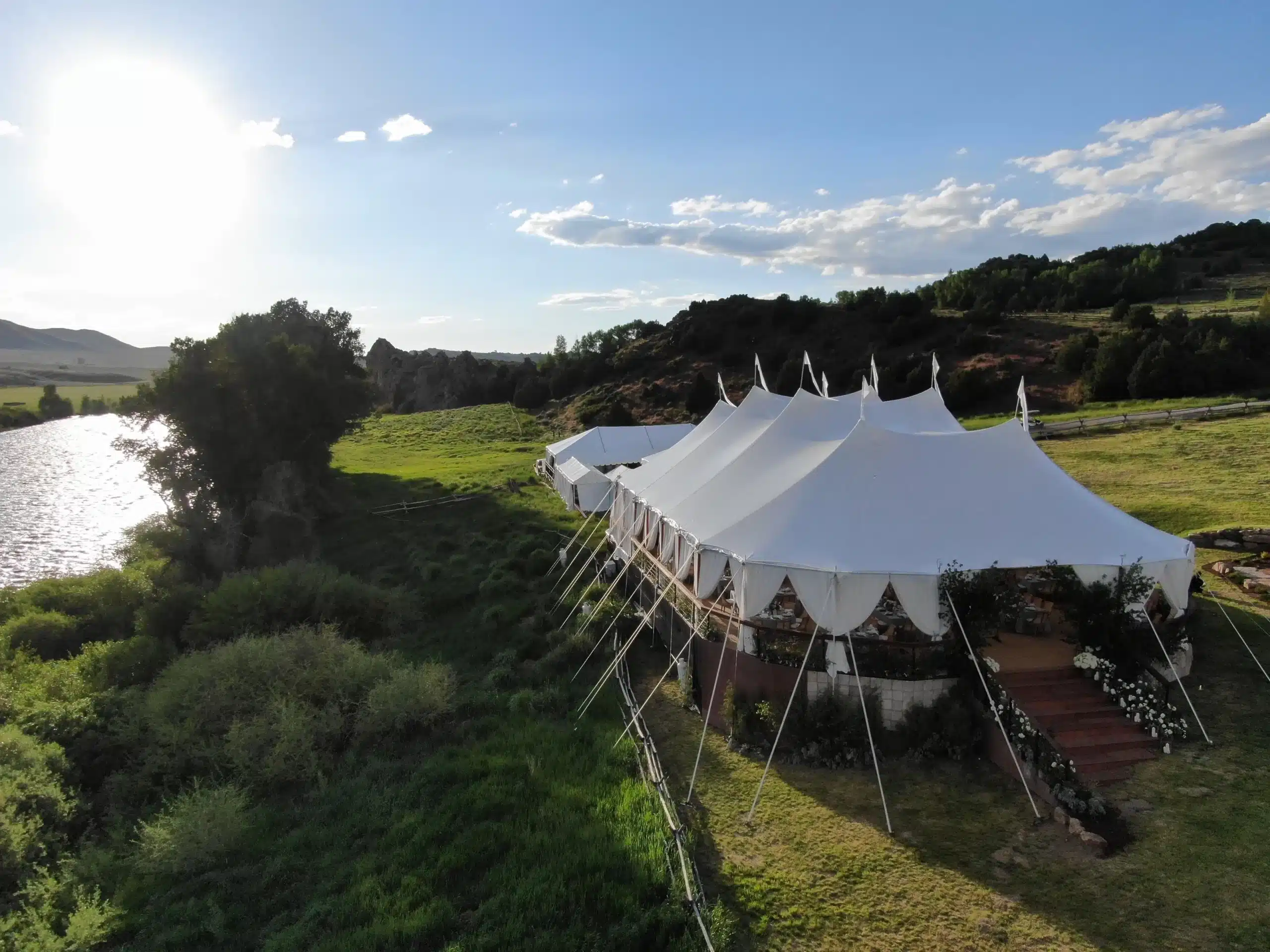Choosing the right event tent is more than just a design decision—it directly affects space, logistics, and guest experience. Century pole tents and frame tents offer two distinct structural approaches with different benefits. From visual appeal to installation complexity, each tent suits different environments and event styles. Whether you’re planning a high-end wedding or a corporate outdoor function, understanding the practical differences is essential. This blog explores how these tent types compare in structure, layout, cost, and weather readiness. With insights aligned to Skyline Tent Company’s services, this guide helps planners make informed, confident choices.
Key Takeaways
- Century pole tents offer timeless elegance and soaring interiors, but center poles reduce layout flexibility.
- Frame tents provide clear-span interiors with no obstructions, ideal for complex or spacious event setups.
- Installation is faster and easier with frame tents, especially on hard or uneven surfaces using modular systems.
- Frame tents are generally more cost-efficient due to simpler setup, fewer labor hours, and easier maintenance.
- Weather resistance favors frame tents, with stronger anchoring, durable materials, and fewer reinforcement needs.
What Are the Structural Differences Between Century Pole Tents and Frame Tents?

Century Pole Tents use one or more tall center poles to hold up the tent canopy, creating a dramatic peak and visual centerpiece. This structure distributes weight through tensioned fabric and surrounding stakes. Frame Tents, by contrast, use a perimeter-supported framework without internal poles, offering open, uninterrupted interiors. These core design differences affect layout flexibility, setup logistics, and usable space. Each type serves different needs depending on event goals and installation conditions.
How Does the Central Pole Design Affect Century Pole Tent Structure?
The center pole provides height and elegance, but it also divides the tent interior and reduces flexibility. Layouts must be planned around the pole, which can interfere with walkways, sightlines, or large design elements. Setup also requires precise positioning and extra anchoring to ensure balance. While the peaked look enhances aesthetic appeal, structural balance becomes more complex. During windy or rainy conditions, pole tents need reinforcement to prevent stress on the canopy. This limits where and how quickly the tent can be installed. Planners must account for the pole when configuring furniture and décor.
What Is the Frame Support System in Frame Tents?
Frame tents use interlocking beams made of aluminum or steel to form a freestanding structure. These beams support the canopy without needing any center poles, leaving the interior wide open. The modular layout allows for quick setup and precise fitting across various site types. Because the frame holds the load, tension is distributed evenly without pulling on the fabric. Anchoring is still required, but without the wide radius that pole tents demand. The structure is highly stable and adaptable, even in tight spaces. This system is popular for its efficiency, flexibility, and open design potential.
How Do These Structures Impact Interior Space and Layout?
A center pole in Century Pole Tents creates a visual anchor but takes up floor space and divides the interior. Layouts must work around this obstacle, which can affect seating and décor. Frame tents eliminate this issue entirely, offering an unobstructed area from wall to wall. This makes it easier to configure dining areas, stages, and custom zones. With no internal supports, planners can divide the space or leave it open depending on the event type. This design helps with visual flow, guest circulation, and equipment setup. Layout decisions become more flexible and practical inside a frame tent.
How Do Installation and Setup Compare Between Pole and Frame Tents?

Century Pole Tents require more time, tools, and precision to install, especially due to the central pole and tension-based design. They also demand more open space around the tent for proper anchoring and balance. Frame Tents, on the other hand, use modular parts and can be assembled faster on a variety of surfaces. Their structure doesn’t rely on large clearance zones, making them ideal for tighter or urban sites. The installation method significantly influences cost, labor, and scheduling flexibility.
What Tools and Time Are Required to Install a Century Pole Tent?
Installing a Century Pole Tent involves heavy-duty equipment like augers, tensioners, and reinforced stakes. The central pole needs careful positioning and often additional support, which increases labor and setup time. On soft or uneven terrain, extra adjustments are required to maintain structural stability. Each step must be completed in sequence to ensure even tension across the fabric. Depending on size, full setup can take the better part of a day. Labor teams need time to assess weather, ground conditions, and layout. These factors increase logistical planning and turnaround times for events.
How Easy Is It to Set Up a Frame Tent Compared to a Pole Tent?
Frame tents are quicker to install due to standardized, pre-engineered parts and simplified anchoring systems. Modular components connect with locking joints and typically do not require specialized tools. Without the need for a central pole, setup requires fewer steps and less manpower. These tents can be built on surfaces like asphalt or concrete using weighted bases. They’re ideal for fast-paced installations where time and crew availability are limited. The design also allows for early partial setup if needed. Overall, this approach reduces setup complexity and streamlines event prep.
What Are the Common Installation Challenges for Each Tent Type?
Century Pole Tents are more sensitive to terrain, requiring wide clearance zones and level ground for staking. High winds or uneven surfaces can delay installation or require structural reinforcement. Frame tents may face alignment issues during multi-section setups, especially with very large spans. However, most modern versions include clear assembly instructions and coded components to simplify the process. Frame tents also allow more flexibility on irregular terrain. Each structure has unique challenges, but modular systems tend to reduce errors and support faster troubleshooting during setup.
What Are the Cost Differences Between Century Pole Tents and Frame Tents?

Cost differences stem from materials, installation complexity, and maintenance requirements. Century Pole Tents often involve higher upfront and recurring costs due to labor-intensive setup and specialized handling. Frame tents, with their standardized components and streamlined assembly, are generally more budget-friendly for frequent or large-scale use. Rental pricing is also influenced by time, staffing, and setup site accessibility. Understanding the full scope of costs helps planners make informed long-term decisions.
What Are Typical Rental Costs for Each Tent Type?
Rental pricing is heavily influenced by labor and time. Century Pole Tents often cost more due to lengthy setup processes and the need for skilled installation teams. Frame tents are faster to install and disassemble, reducing crew hours and overall service costs. This makes them a better value for multi-day or recurring events. Additional costs may apply for complex layouts, terrain leveling, or reinforcement needs. Frame tents also incur fewer location restrictions, which can help avoid extra site preparation fees. Their cost-efficiency makes them a practical option for planners on tight schedules or budgets.
Which Factors Influence the Overall Cost of Each Tent?
Tent cost depends on setup time, equipment, crew size, material quality, and the type of event being hosted. Century Pole Tents often require more detailed preparation and attention to weatherproofing, which increases maintenance and labor. Frame tents involve quicker assembly, simpler anchoring, and reduced crew needs, cutting operational costs. Storage, cleaning, and transportation are also easier for frame tents due to modular sizing. Location and venue rules can also impact fees—especially if staking or large footprints are restricted. Evaluating all these factors helps determine the most cost-effective structure for each event.
How Do Space and Capacity Differ Between Century Pole and Frame Tents?
Tent structure directly influences how space can be used for layouts and guest capacity. Century Pole Tents offer high ceilings and open arches but include center poles that occupy valuable floor space. Frame tents eliminate internal supports, creating full-span interiors that maximize layout potential. The absence of interior obstructions makes frame tents better suited for flexible seating, large crowds, and multiple zones. Understanding the usable footprint is key when planning for functionality and visual flow.
Frequently Asked Questions
What is the main benefit of choosing a century pole tent for an event?
Century pole tents create a dramatic, high-peak interior that adds elegance and charm—especially suited for weddings and formal events. Their classic design delivers a timeless aesthetic that elevates any setting.
How do frame tents provide a more flexible event space compared to century pole tents?
Frame tents offer a clear-span layout with no center poles, allowing full use of interior space. This makes them ideal for custom seating, stage setups, or events with multiple zones and high guest flow.
Are there significant differences in installation time between century pole and frame tents?
Yes, century pole tents take longer to install due to their central supports and tension requirements. Frame tents can be set up more quickly, and Skyline Tent Company’s crews are trained for efficient modular assembly.
Which tent type is more cost-effective for large events?
Frame tents are generally more cost-effective due to lower setup time, simplified anchoring, and efficient reuse. They’re a smart choice for large-scale or multi-day events requiring flexibility and quick turnaround.
How does weather resistance compare between century pole and frame tents?
Frame tents typically offer stronger weather resistance with reinforced frames and tension-distributing structures. When properly installed, both tent types can perform well, but frame tents often require less reinforcement in harsh conditions.
Conclusion
Skyline Tent Company recognizes that selecting the right tent is crucial for an unforgettable luxury event. Century pole tents deliver timeless elegance ideal for weddings and formal gatherings, while frame tents offer flexibility and ease of setup suited for corporate events and large outdoor functions. Careful evaluation of installation needs, cost factors, space optimization, and weather resistance is vital for making the best decision. Event planners are encouraged to use these insights to tailor their choice to the unique demands of their event.

